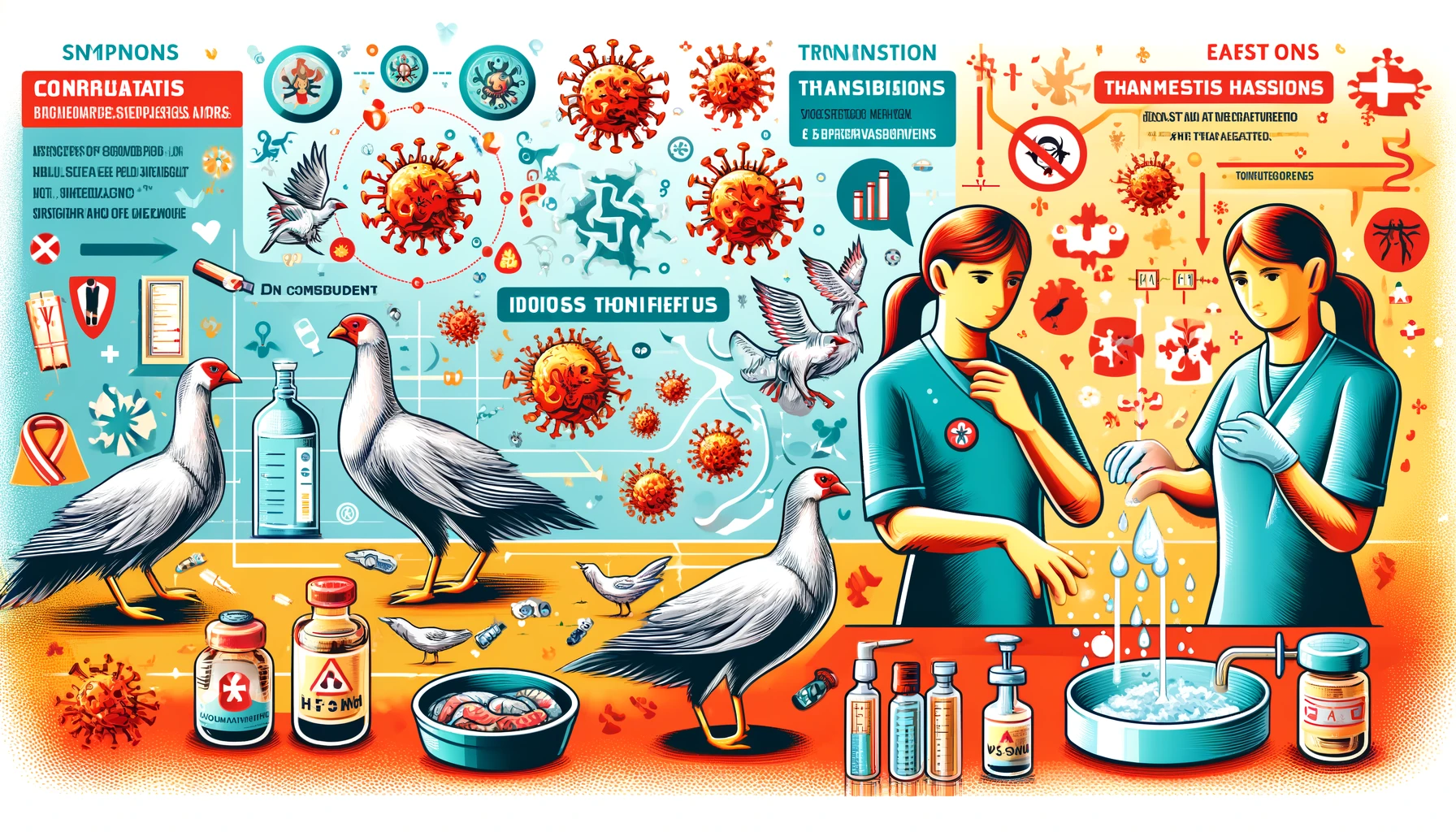Bird Flu: What You Need to Know About Avian Influenza
Bird flu, also known as avian influenza, is a viral infection that primarily affects birds but can occasionally infect humans and other animals. Understanding bird flu is crucial as it poses significant health risks to both poultry and humans, leading to severe economic impacts and public health concerns. In this comprehensive guide, we will explore what bird flu is, its symptoms, how it spreads, and measures for prevention and treatment.
What is Bird Flu?
Bird flu refers to the influenza viruses that primarily infect birds. There are several strains of avian influenza viruses, with H5N1 being one of the most well-known and dangerous to humans. These viruses can cause severe respiratory illness and have the potential to mutate and spread among humans, leading to pandemics.
Key Facts About Bird Flu
- Avian Influenza: Bird flu is also known as avian influenza.
- Strains: There are multiple strains, with H5N1 being highly pathogenic.
- Impact: It affects poultry industries and poses health risks to humans.
Bird Flu Symptoms
Recognizing bird flu symptoms is essential for early detection and treatment. Symptoms in birds can range from mild to severe, while symptoms in humans can be similar to those of seasonal flu but often more severe.
Symptoms in Birds
- Sudden death without any signs
- Lack of energy and appetite
- Swelling of the head, eyelids, comb, wattles, and hocks
- Purple discoloration of the wattles, combs, and legs
- Decreased egg production or soft-shelled/misshapen eggs
Symptoms in Humans
- Fever and chills
- Cough and sore throat
- Muscle aches
- Eye infections (conjunctivitis)
- Severe respiratory illness (such as pneumonia)
Bird Flu Cases
Bird flu cases have been reported globally, affecting both poultry and humans. The number of cases varies by region and is influenced by factors such as bird migration patterns, poultry farming practices, and virus surveillance efforts.
Notable Bird Flu Outbreaks
- H5N1 Outbreaks: Major outbreaks in Asia, Africa, and Europe.
- H7N9 Cases: Detected in China with significant human infections.
- H5N8: Affecting Europe, leading to culling of poultry to control spread.
Tracking Bird Flu Cases
- Surveillance Systems: National and international surveillance systems monitor bird flu cases.
- Reporting: Farmers and poultry workers are encouraged to report suspicious illnesses in birds.
Bird Flu Outbreaks and Transmission
Bird flu outbreaks can have devastating effects on poultry industries and pose significant public health risks. Understanding how bird flu transmission occurs is crucial for controlling outbreaks and preventing the spread of the virus.
How Bird Flu Spreads
- Direct Contact: Between infected and healthy birds.
- Contaminated Surfaces: Equipment, clothing, and vehicles can carry the virus.
- Wild Birds: Migratory birds can spread the virus over long distances.
Human Transmission
- Close Contact: Handling infected poultry or surfaces contaminated with secretions.
- Consumption: Eating undercooked poultry or eggs from infected birds.
- Limited Human-to-Human: Rare, but possible in close contact situations.
H5N1 Virus: A Threatening Strain
The H5N1 virus is one of the most well-known strains of bird flu, responsible for severe outbreaks and human infections. This highly pathogenic avian influenza virus can cause high mortality rates in poultry and significant health issues in humans.
Characteristics of H5N1 Virus
- High Pathogenicity: Causes severe disease in poultry and high mortality rates.
- Human Infections: Can cause severe respiratory illness and has a high fatality rate.
- Mutation Potential: Can potentially mutate and become more transmissible among humans.
Bird Flu Vaccine
Vaccination is one of the key strategies to prevent and control bird flu in poultry. Vaccines can help reduce the spread of the virus and protect both birds and humans from infection.
Development of Bird Flu Vaccines
- Types of Vaccines: Inactivated vaccines and recombinant vaccines are commonly used.
- Efficacy: Varies based on the strain and vaccine formulation.
- Challenges: Vaccine development is complex due to the virus’s ability to mutate.
Human Vaccination Efforts
- Pandemic Preparedness: Vaccines are developed as part of pandemic preparedness plans.
- Research and Development: Ongoing efforts to create effective vaccines for various strains.
Bird Flu Treatment
Treatment options for bird flu vary depending on the severity of the infection and the strain of the virus. Early diagnosis and supportive care are crucial for managing the disease in both humans and birds.
Treatment in Birds
- Culling: Infected and exposed birds are often culled to prevent the spread of the virus.
- Biosecurity Measures: Implementing strict biosecurity measures on farms.
Treatment in Humans
- Antiviral Medications: Oseltamivir (Tamiflu) and zanamivir (Relenza) are commonly used.
- Supportive Care: Hospitalization and supportive care for severe cases.
- Prevention: Avoiding contact with infected birds and practicing good hygiene.
The Importance of Understanding Bird Flu
Understanding bird flu is essential for controlling outbreaks, protecting public health, and safeguarding the poultry industry. By recognizing symptoms, tracking cases, and implementing prevention and treatment measures, we can mitigate the impact of this viral threat.
In the fight against bird flu, knowledge is power. Staying informed about bird flu symptoms, outbreaks, and prevention strategies can help protect both poultry and humans from this dangerous virus. For more detailed insights and educational resources on bird flu and other health-related topics, visit Regent Studies.
To learn more about the latest research and developments in bird flu, you can also explore additional resources such as the World Health Organization.
By staying vigilant and proactive, we can work together to prevent and control bird flu, ensuring the health and safety of our communities and the poultry industry.




